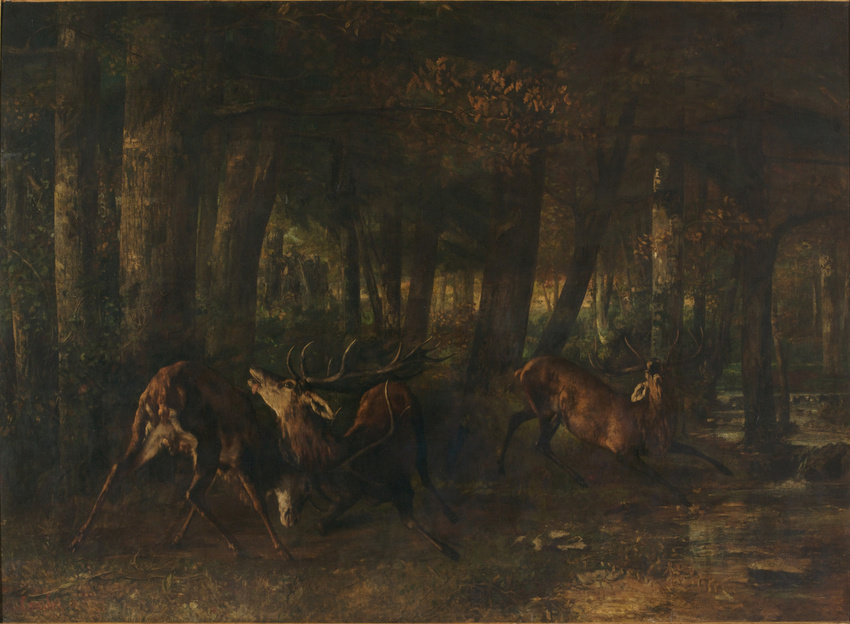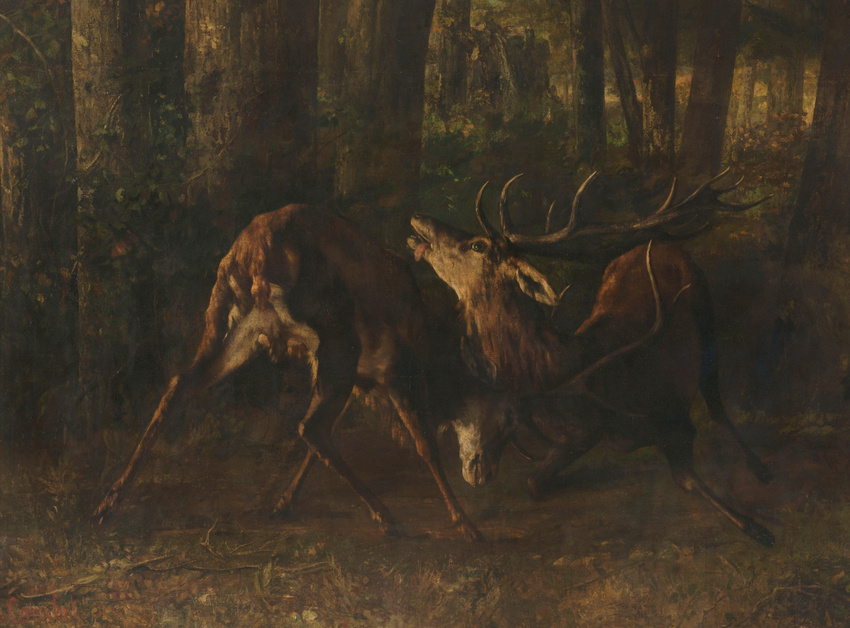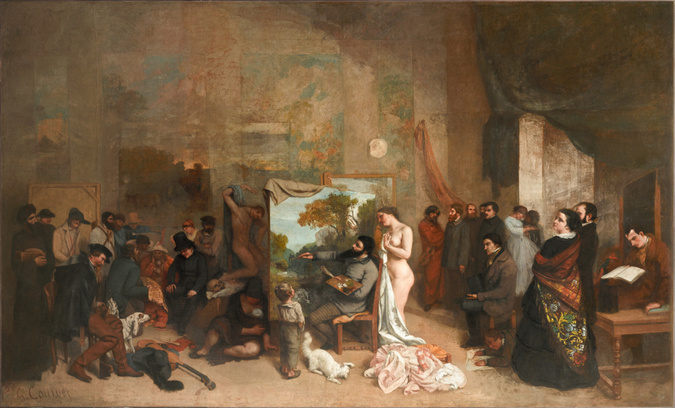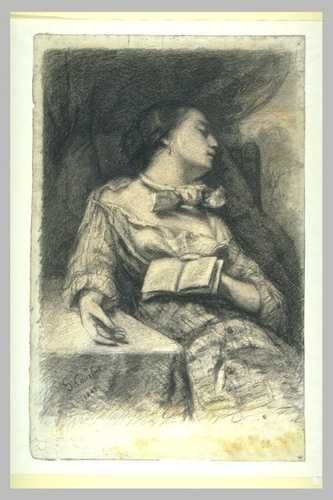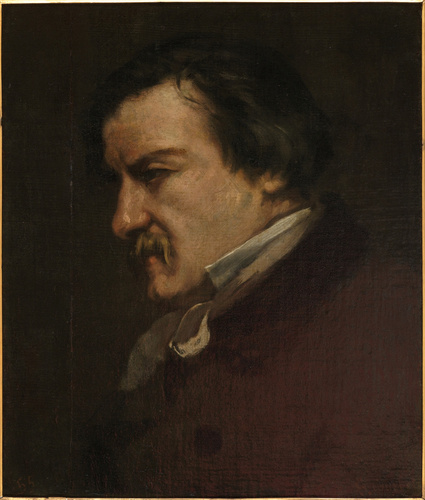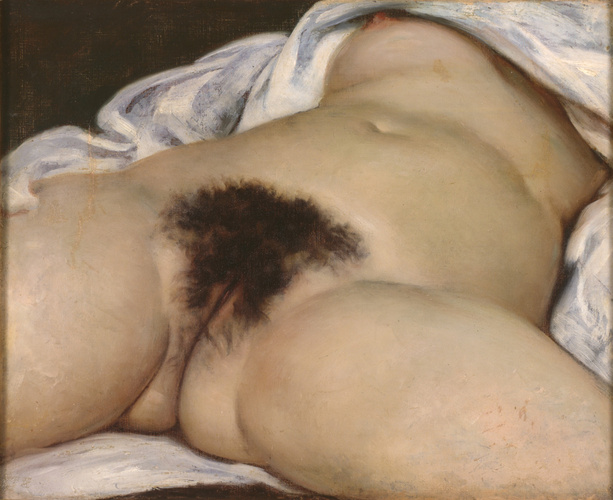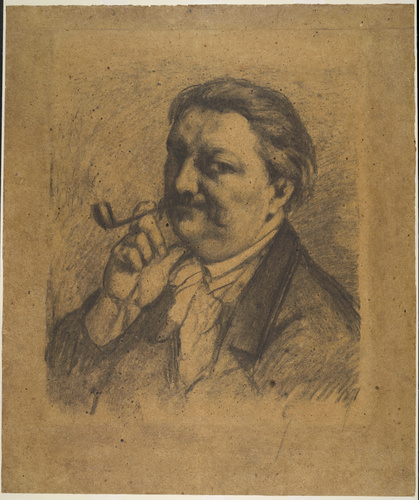Le Rut du printemps. Combat de cerfs
Of all Courbet's hunting and forest scenes, Spring Rut has the greatest breadth in both its physical size and in the spirit that animates it. Regarded for a long time as pandering to public opinion, Courbet's hunting scenes were for many years scorned by art historians. However, by combining landscapes, animal painting and genre scenes, with references to a long pictorial tradition, from the Flemish masters of the 17th century to contemporary English artists, these subjects enabled Courbet to bring his questioning of the hierarchy of the genres to a close and to bring the spirit of history painting into a familiar area.
Here the animal world becomes a subject of tragedy. The artist gives it the dramatic drive of historical events and human passions. In a letter from 1861 to the writer Francis Wey, Courbet recounts the circumstances in which he produced the painting: "I went to Germany to observe this phenomenon. I saw those battles [...]. I am absolutely sure of the action. With those animals none of the muscles show. The battle is cold, the rage deep-seated, the thrusts terrible". Courbet insists on how faithfully reproduced this is, as if to convince himself: "There is nothing idealised about it. [...] they are totally accurate". But as regards the inscription, Courbet was less than accurate, placing his picture in the wrong time of year: the rutting takes place in autumn and winter, never in spring. Similarly, he situates his drama in the familiar landscape of Franche-Comté, where no deer lived during the 19th century. So Courbet does recompose, invent, to give a better account of this primitive tragedy he finds so fascinating. This is the necessary condition enabling the painter to return to the wild state, pure and violent, which links him irreparably to the animal.
Courbet Dossier
